News
2024.09.05
Columns
About Nagoya Ceramic Hall
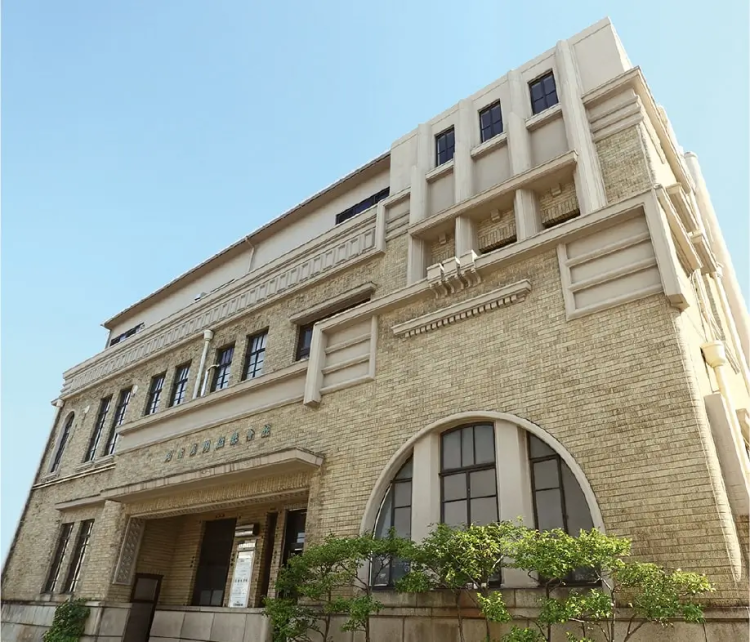
When asked about the major ceramic production area, how many of you would imagine Nagoya? Although the image of Nagoya has faded considerably now, from the late Meiji Era to the early Showa Era, Nagoya had a thriving ceramics industry that was ranked first or second in Japan, and in particular boasted an overwhelming share of the export ceramics market. In this column, we will introduce the Nagoya Ceramic Hall, which symbolizes the prosperity of Nagoya’s ceramics industry.
Table of Contents
1. What is Nagoya Ceramic Hall
2. Nagoya Ceramic Hall from the perspective of “tiles”
3. Nagoya Ceramic Hall from the Perspective of “Exhibits”
4. Conclusion
What is Nagoya Ceramic Hall
The Nagoya Ceramic Hall was built in 1932 in Higashi-ku, Nagoya City.
At the time, the ceramics industry was flourishing in Japan, and there were more than 600 manufacturers, processors, and traders of ceramics in the Nagoya area. Tamesaburo Imoto, founder of Imoto Shoten (now Imoto Sangyo), and others saw the need for a larger association and established the Nagoya Ceramics Trade and Commerce Association in 1910. The Nagoya Ceramic Hall was later built as a venue for the union’s activities.
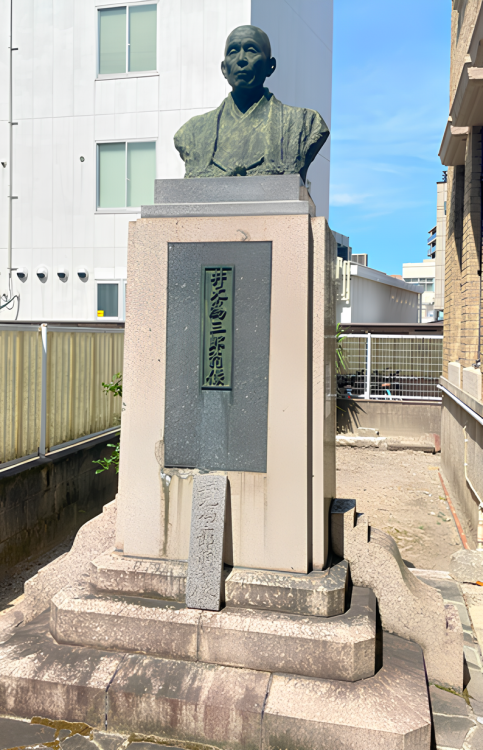
Statue of Tamesaburo Imoto
Today, the Nagoya Ceramics Hall is a general incorporated foundation that exhibits the collection and promotes the historical value. The building also has high architectural value, and has been designated as an important landmark by the City of Nagoya and is registered as a National Tangible Cultural Property.

Hall
The Nagoya Ceramic Hall is a valuable resource in terms of its architecture, collection, and history, and we would like to look at it from the perspective of ceramics, which is the main product of Imoto Sangyo.
Nagoya Ceramic Hall from the Perspective of “Tiles”
Many tiles are used in the Nagoya Ceramics Hall. Among them, we would like to introduce some decorations that show the historical background of the building.
Scratch Tiles
Scratch tiles are used on the exterior walls of the Nagoya Ceramics Hall. These tiles, which look like scratches if you look closely, were first used for exterior walls around 1920, and their natural unevenness not only gives them warmth, but also makes them durable. The Wright Building of the Imperial Hotel designed by Frank Lloyd Wright, which can be seen today in Meiji-mura, also uses scratch bricks with scratch decoration.
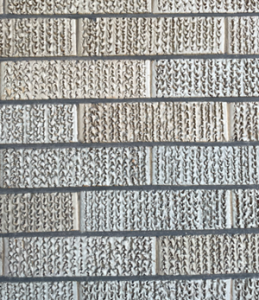
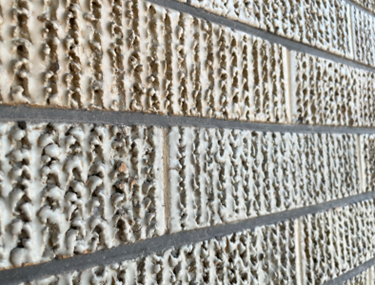
Diamond and Monkey Tiles
When you enter the entrance of the Ceramics Hall, you will see tiles on the floor. These tiles were manufactured by Ina Ceramics (now LIXIL) at that time. The diamond-shaped tile was called “Diamond” and the strangely shaped one was called “Monkey” because it looked like a monkey’s face.
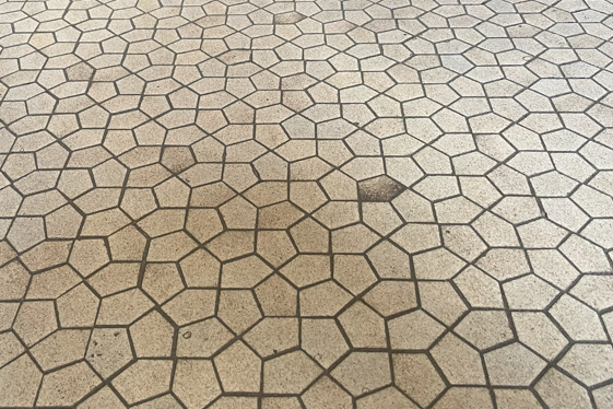

These tiles were pasted one by one by craftsmen of the time, shaping the tiles to fit the space, and the fact that the tiles are filled in without gaps shows their high skill.
Tiles are also used for decoration in various parts of the Nagoya Ceramics Hall, allowing visitors to learn about the architectural style and history of the period.
Nagoya Ceramic Hall from the Perspective of “Exhibits”
The Nagoya Ceramic Hall has an area where the collection is permanently displayed, and an area where items are displayed according to seasonal themes. This time, we will introduce some of the permanent exhibits.
Deco-mori and Glass-mori
Deco-mori is a technique unique to Nagoya, in which the surface of porcelain is decorated to appear raised.
Glass-mori is a beautiful technique in which fine glass is heaped on the surface, making the grains of glass appear delicate and shining.
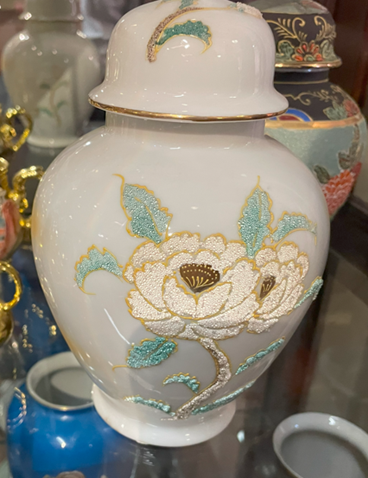
Overglaze Painting
Overglaze painting is a technique used to decorate ceramics by painting designs on the glazed surface after firing.
This piece may be confusing to those who see it for the first time, but the design depicts a hundred old men, called “Hyakuro,” which is considered one of the motifs of happiness.
The detailed patterns were painted using stamps and other techniques from that time, but even taking this into account, the work is still very elaborate.
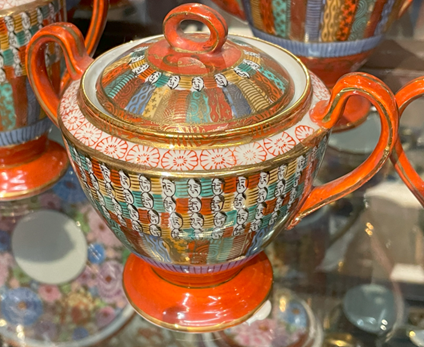
Novelty
The word “novelty” does not mean what it means today, but refers to decorative items such as dolls made of ceramics.
The lace-like clothing part of these dolls is made of ceramics, and by blending a clay-like substance with the cloth lace fabric and firing it, only the cloth part is burned off to create the delicate clothing part.
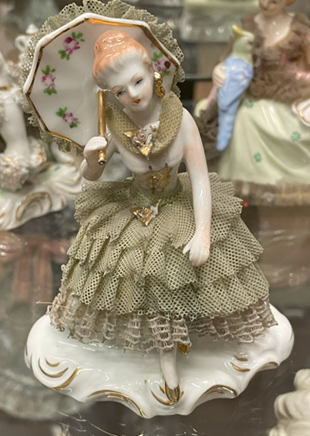
Conclusion
At the Nagoya Ceramic Hall, you can learn from the exhibits and buildings how the ceramics industry developed in Nagoya and what the situation was like at the time. Guided tours and painting classes are also held, and you can purchase ceramics as souvenirs. If you’re interested, please visit.
Imoto Sangyo also handles a wide variety of Japanese ceramics tableware that have developed through this kind of history. Please refer to “CASES” page for more information.
(Reference)
Nagoya Ceramic Hall
Cultural Path of Futaba Museum
LIXIL
Category
Archive

